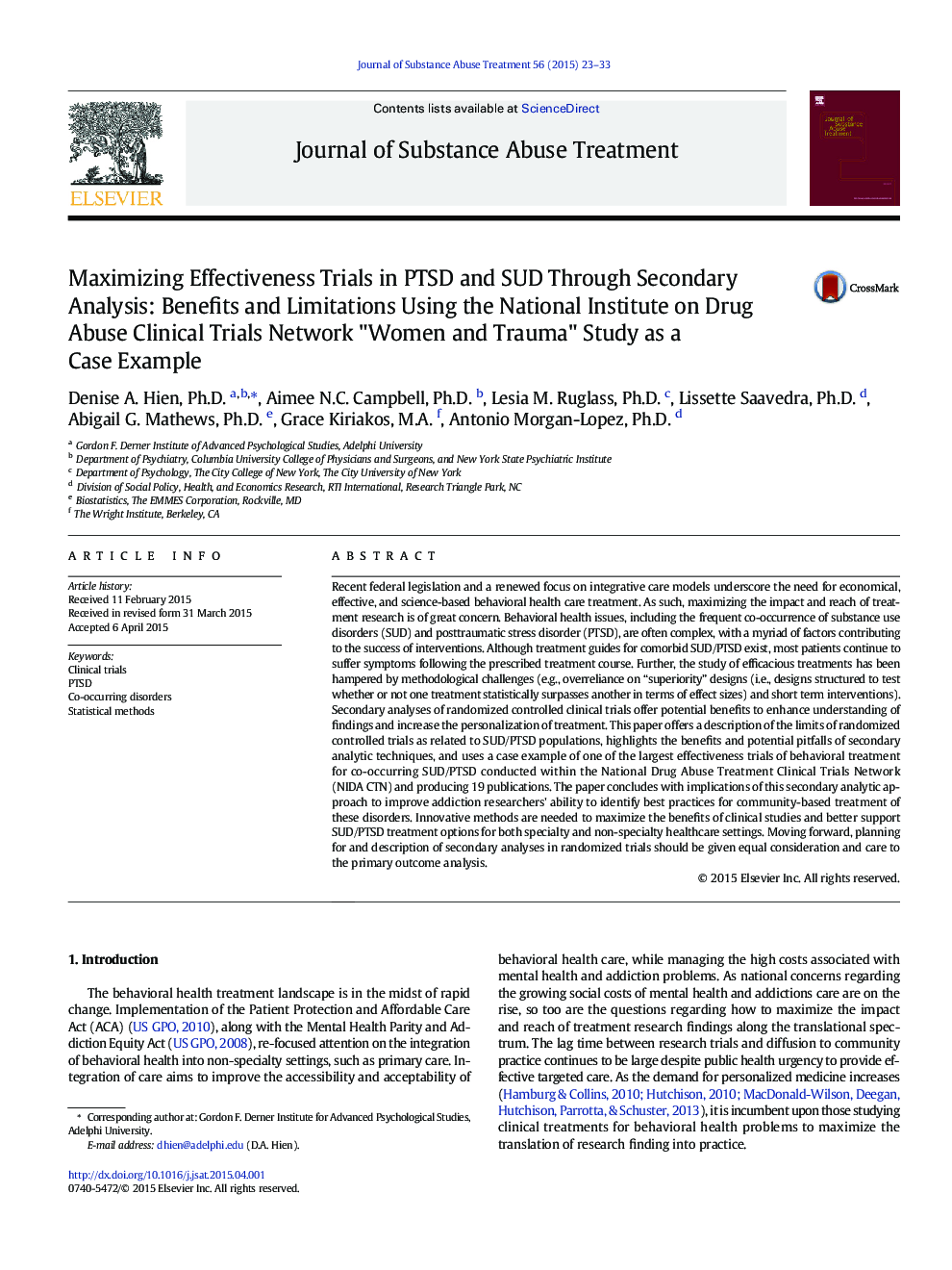| کد مقاله | کد نشریه | سال انتشار | مقاله انگلیسی | نسخه تمام متن |
|---|---|---|---|---|
| 329673 | 543579 | 2015 | 11 صفحه PDF | دانلود رایگان |

• Offers a description of the limits of randomized controlled trials as related to SUD/PTSD populations.
• Highlights the benefits and potential pitfalls of secondary analytic techniques.
• Provides a case example using the largest effectiveness trial of behavioral treatment for co-occurring SUD/PTSD conducted within the National Drug Abuse Treatment Clinical Trials Network (NIDA CTN).
• Concludes with implications of this secondary analytic approach to improve addiction researchers' ability to identify best practices for community-based treatment of these disorders.
Recent federal legislation and a renewed focus on integrative care models underscore the need for economical, effective, and science-based behavioral health care treatment. As such, maximizing the impact and reach of treatment research is of great concern. Behavioral health issues, including the frequent co-occurrence of substance use disorders (SUD) and posttraumatic stress disorder (PTSD), are often complex, with a myriad of factors contributing to the success of interventions. Although treatment guides for comorbid SUD/PTSD exist, most patients continue to suffer symptoms following the prescribed treatment course. Further, the study of efficacious treatments has been hampered by methodological challenges (e.g., overreliance on “superiority” designs (i.e., designs structured to test whether or not one treatment statistically surpasses another in terms of effect sizes) and short term interventions). Secondary analyses of randomized controlled clinical trials offer potential benefits to enhance understanding of findings and increase the personalization of treatment. This paper offers a description of the limits of randomized controlled trials as related to SUD/PTSD populations, highlights the benefits and potential pitfalls of secondary analytic techniques, and uses a case example of one of the largest effectiveness trials of behavioral treatment for co-occurring SUD/PTSD conducted within the National Drug Abuse Treatment Clinical Trials Network (NIDA CTN) and producing 19 publications. The paper concludes with implications of this secondary analytic approach to improve addiction researchers' ability to identify best practices for community-based treatment of these disorders. Innovative methods are needed to maximize the benefits of clinical studies and better support SUD/PTSD treatment options for both specialty and non-specialty healthcare settings. Moving forward, planning for and description of secondary analyses in randomized trials should be given equal consideration and care to the primary outcome analysis.
Journal: Journal of Substance Abuse Treatment - Volume 56, September 2015, Pages 23–33